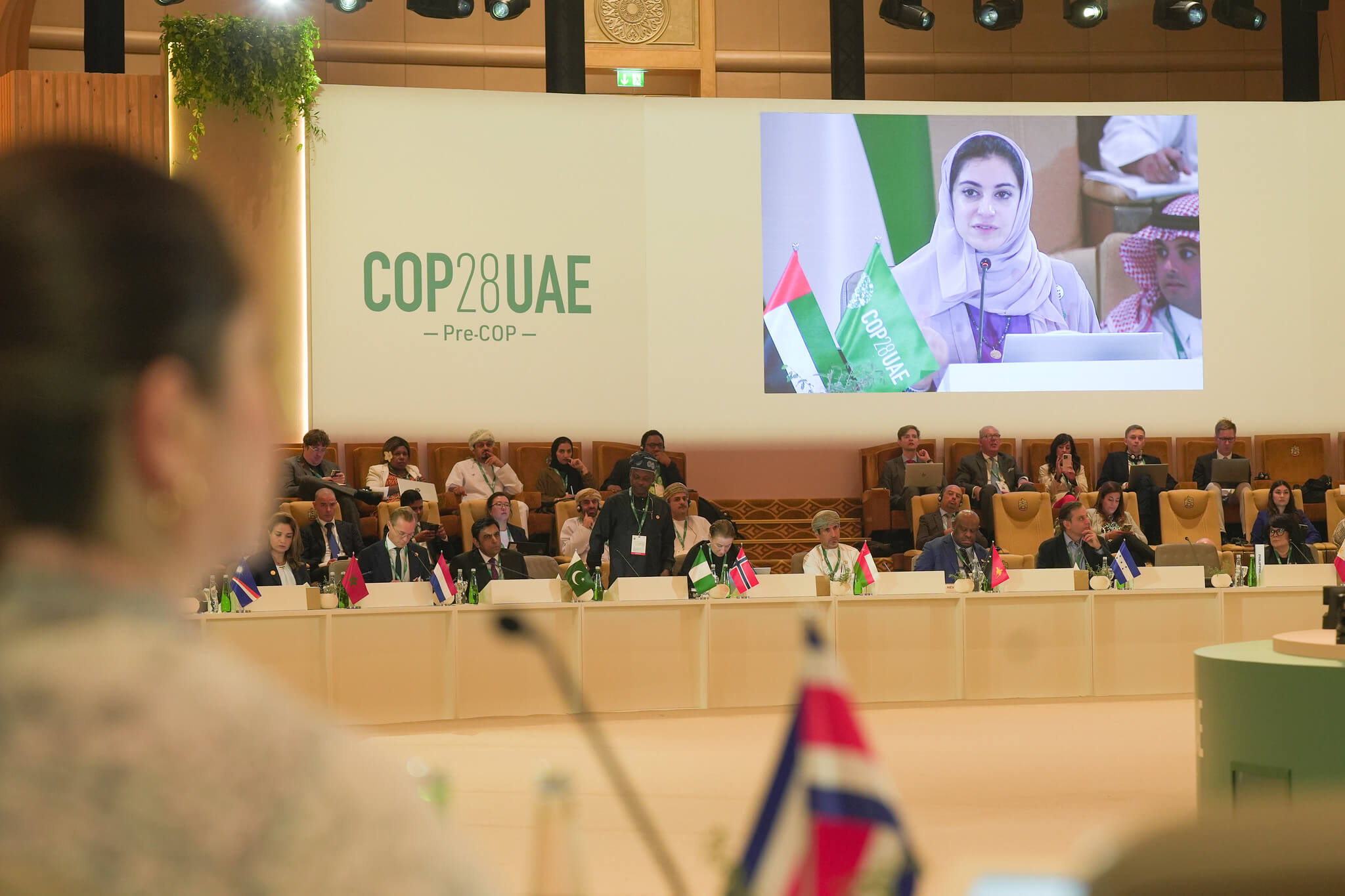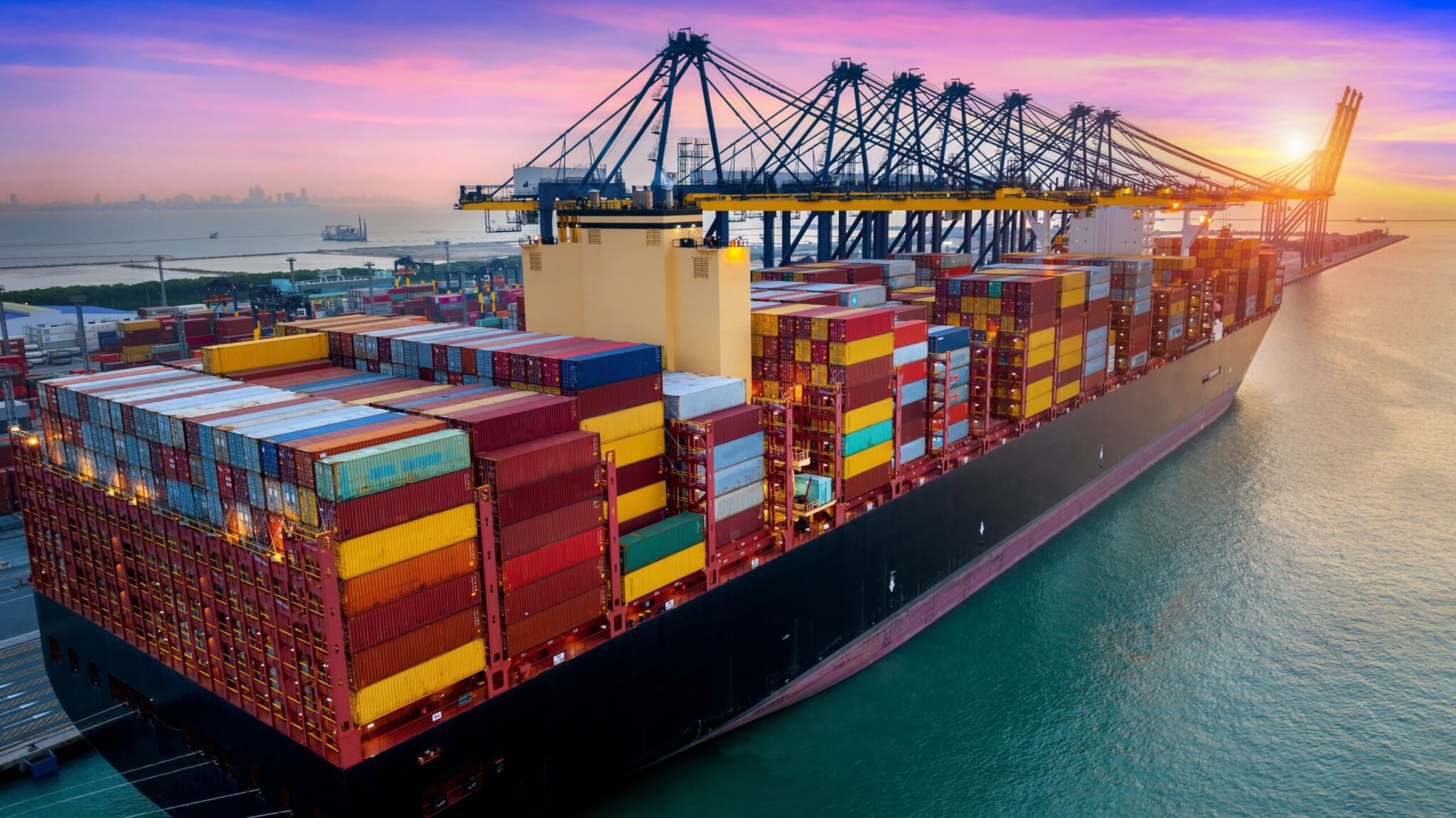
In the global race to zero emissions, electric transportation is one of the key climate solutions for decarbonizing the sector. Powered by batteries instead of fossil fuel-burning combustion engines, electric transportation has a lower climate footprint over the course of the vehicle’s lifetime and that trajectory will continue as we move to renewable energy and as battery technology improves. In addition to climate change, fossil fuel-powered transport simultaneously contributes to local pollution that prematurely kills hundreds of thousands of people every year, and contributes to millions of cases of respiratory disease annually – electric transportation can avoid these devastating health impacts.
In this decisive decade of climate action, we can maximize the benefits of the energy and transportation transition. Internal combustion vehicles are built from mined minerals with harmful supply chains, and run on oil extracted all over the world with human rights, ecological, and climate-altering impacts. The mined materials used in battery-powered electric vehicles (EVs) also have an ecological and social footprint of their own, in large part due to the impacts of mining the lithium, nickel, cobalt and other minerals used in EV batteries. Mining contributes to environmental harm, freshwater depletion, mine-waste dumping, and human rights violations in many parts of the world.
We must urgently end our addiction to oil – and at the same time, we must ensure the transition to low-carbon energy sources is done right. Unlike internal combustion engine vehicles, which must be continuously filled with oil, we have an opportunity to get the transition to batteries right. Shifting to low-carbon transportation also offers the opportunity to transition to a more sustainable minerals economy – a chance to change irresponsible mining practices while at the same time fostering greater dependence on recycling and recirculation that can offset demand for newly mined minerals.
Building on our previous blog highlighting philanthropic recommendations for battery work, here we dive deeper into three key policy areas that are foundational for a more sustainable battery supply chain, and the collaborative effort required to achieve it.
Key policy intervention areas
Stemming from the example of the proposed first-of-its-kind EU battery sustainability law, the following policy areas have emerged as leverage points for sustainable battery supply chains. These are also focal areas where advocates working across climate solutions and human rights can work together.
-
Responsible minerals sourcing that centers human rights and the environment:
Responsible minerals sourcing must center the human rights of Indigenous, frontline communities, and workers at mining, recycling, reclamation, manufacturing and renewable energy projects, including the right of Indigenous Peoples to Free, Prior and Informed Consent as aligned with the UN Declaration on the Rights of Indigenous Peoples. Laws governing mining vary greatly by country, with no country yet doing enough to protect social and environmental values. In addition to mandatory environmental and human rights regulations, governments and industry can also look to the Initiative for Responsible Mining Assurance (IRMA) which is a multi-stakeholder led process to define best practices and standards. Consumer-facing brands that make cars, electronics, wind turbines, solar panels, jewelry, and household goods are already committing to responsible sourcing from mines that have been independently audited and verified as compliant with the IRMA Standard. In addition to pressuring industry players to join IRMA, advocates can push governments to adopt strong mining laws for a convergence of standards and practices.
-
Recycling and circularity:
Currently, economic structures including subsidies and market advantages create the conditions that prioritize new extraction of minerals, while reuse, recycling and repurposing face steep policy hurdles. It’s time create greater financial and policy support for innovation in retrieving materials, recycling, and extending battery use through reuse and repurposing. Recent research by the University of Technology, Sydney points to the tremendous potential that recycling and closed-loop materials systems can play, if the right policies are in place. China, Europe, and now California are developing policies around battery recycling and circularity. Advocates can support policies that advance best practices in material retrieval, mandate minimum recycling, require recycled content in new batteries and invest in domestic recycling capacity and circularity.
-
Just transition for workers and communities:
As jobs shift from one industry to another, we have an opportunity to support a just and equitable transition for workers and communities, and the creation of new, safe, well-paying jobs. Leading labor unions like IndustriALL Global Union and the United Steelworkers, together with environmental justice groups have advocated for a just transition and support for displaced workers, while also advocating for a response to the climate crisis and more responsible mining practices. Advocates can work across labor, environmental justice, and conservation movements to co-create a policy pathway for job training and creation in forthcoming industries such as battery recycling.
In addition to these three more immediate policy areas, we will need to seek out transformative, enduring solutions that ensure more inclusive and equitable access to electric transportation and the benefits of the low-carbon transition.
A call for a stronger alliance
There are dozens of NGOs, grassroots groups, and labor unions already working to build these bridges and support enduring solutions. In 2021, a group of 175 civil society organizations including Earthworks, Amnesty International, United Steelworkers, First Peoples Worldwide, Sierra Club, Natural Resources Defense Council, and many others endorsed a Declaration on Mining and the Energy Transition to support a just and rapid transition away from fossil fuels and toward a renewable energy system and more responsible mining. As we move from oil to electric transportation, we have the opportunity to further improve the sustainability of the transition while reducing supply chain impacts for renewable energy and transportation. Doing this right will require an alliance between climate, environmental justice, and human rights advocates – together we can do this.
We are grateful to receive this gift on behalf of the Drive Electric Campaign — an audacious strategy to end the polluting tailpipe and transition to 100% clean electric transportation, delivering massive benefits for human health, energy security, the economy, and the climate. Aimed at stopping one of the biggest contributors to the climate crisis, Drive Electric works with an expansive network of partners to accelerate systems change through smart government policies, business leadership and action, and people-powered coalitions representing health, environment, labor, consumers, and communities affected by vehicle pollution.
This gift comes at a critical time as the world faces the dual crises of climate change and a global energy crunch fueled by conflict and funded significantly by a reliance on oil and gas. Fortunately, as Scott reflects, “we have what we need to solve our shared problems.” Electric transportation, powered by abundant renewable energy, can eliminate over 90% of the climate pollution and nearly all oil demand from road transport, providing one of the most powerful, globally scalable ways toward a safer climate while also supporting energy diversity and security. These funds will support our ongoing work to reach 100% sales of electric buses, two- and three-wheelers by 2030, cars by 2035, and freight trucks by 2040, leading to 100% zero-pollution road transportation globally by 2050. We are proud to convene Drive Electric in partnership with the Energy Foundation, Energy Foundation China, European Climate Foundation, the Shakti Sustainable Energy Foundation’s Electric Mobility Initiative, and many others. ClimateWorks Foundation acts as the secretariat.
Transportation is fundamental to modern life, yet our current system contributes over 20% of global energy-sector greenhouse gas emissions. For too long, diesel and gas-powered vehicles have kept fossil fuels flowing from pipeline to fuel tank – damaging our climate, distorting our politics, and directly contributing to air pollution that frontline communities in the U.S. have termed “diesel death zones.” Drive Electric partners effect positive change on all modes: from e-buses in Indonesia, electric delivery rickshaws in Delhi, to the planned phase-out of polluting vehicles in Chile in favor of electric transport, and proposals to do the same in the European Union and several U.S. states.
Now, over two billion people live in places covered by government commitments to 100% zero-emission vehicles as the future of road transportation. Business is stepping up as well, with over 100 companies committing to shift their investments, vehicle production, and procurement to electric. This incredible progress is made possible by many of the actions, voices, and engagement of our partners around the world. These advances were unimaginable just a few years ago, yet it is not inevitable that the transition to electric transportation will meet the speed needed to address the climate challenge. With philanthropic support, including this generous gift, we can scale the progress globally, working together to ensure stated commitments become real-world actions and investments, leading to on-the-ground change and benefits to all.
We are honored to be included in the list of “remarkable organizations” supported by Scott in this latest round of giving. Climate change mitigation still receives less than 2% of total philanthropic contributions, yet the harms of climate disruption are already disproportionately impacting the most vulnerable communities locally and globally. By ending the polluting tailpipe and transitioning to 100% clean transportation, together we can deliver a safer, healthier world.
— Anthony Eggert, senior director of transportation program, ClimateWorks Foundation and global lead for Drive Electric Campaign Steering Committee
In response to the official call for inputs for the first global stocktake (GST), the independent Global Stocktake (iGST) consortium has submitted its first input to the formal GST process.
The iGST is a community of analysts and advocates that have been following the development of the formal global stocktake since forming in 2018. We appreciate all of the careful work that has gone into the GST to date, and hope that our submission can offer useful insights and data to fill remaining gaps as the process moves forward.
The iGST submission lays out a set of problem statements from the independent community that may help advance dialogue around these key issues, and a set of recommendations under each thematic area which we encourage the GST to take up. Centered around remaining areas of complexity that would benefit from dialogue during the GST, these include:
Equity
- To conduct the GST “in light of equity” it will be essential to set its scope appropriately. In addition to finding ways of including all of mitigation, adaptation, loss and damage, finance and support, and capacity building, the GST will need to find ways of accommodating the dynamic nature of global goals for adaptation and loss and damage as these are dependent on global achievements across mitigation, finance and support, and capacity building.
- The GST must open into high-quality assessments in the light of equity. This means that, though the GST outcomes are themselves mandated to be collective, the GST will need to create a context within which the global community can move towards a shared understanding of the principles and benchmarks appropriate to assessing the equity, and inequity, of individual national pledges and individual national actions. The challenge of just differentiation, after all, has not gone away.
Adaptation
- The GST must address the understanding of ‘adequate and effective’ adaptation in relation to the Global Goal on Adaptation, and in order to be able to measure against it in future GSTs.
- The GST must consider how best to integrate non-state actor adaptation data such as that from the private sector. This type of data is currently largely absent from country submissions to the GST; how should the GST integrate this information to create a holistic view of existing efforts, and to increase ambition?
Means of implementation and support
- The GST will need to address a number of quantitative and qualitative aspects of climate finance. Poor clarity on the scope of climate finance has led to ongoing frustration and tension for both developed and developing country Parties. Going beyond the definition and amounts of climate finance, the technical phase of the GST will need to transparently address, for example, if climate finance is meeting developing countries’ needs in order to implement the long-term goals of the Paris Agreement, if access modalities are appropriate, and the impact finance is having on developing countries’ debt sustainability and development progress.
- The GST must surface the perceptions of fairness and justice in climate finance provision and access. Equity is and will remain critically important to the functioning of the ambition, or ratchet mechanism of the Paris Agreement. The technical phase of the GST will need to establish an evidence base for loss and damage finance, define principles of just transition financing, and explore how means of implementation and support can accelerate climate-consistency of broader finance flows without detracting from minimum quantified support commitments of developed countries, or putting undue conditions on support; key finance sub-topics that place differing obligations and expectations on Parties.
Mitigation
- Global-scale, techno-economic mitigation information–which is broadly available–has dominated the current stocktaking conversations. Societal and institutional factors at the country-level are essential to enhancing climate ambition and action. However, this type of information is under-represented in the GST. The focus on the more widely available techno-economic data may hinder the effectiveness of the GST by supporting incomplete or biased conclusions.
- Bottom-up, in-country assessments of mitigation needs–including those from subnational and non-governmental actors–are important complements to top-down national or global evaluations, but are insufficiently incorporated in the formal stocktake process. Current efforts to measure global mitigation progress and ability to achieve mitigation success are also largely driven by developed-country institutions, and therefore lack developing-country perspectives on climate mitigation and development.
In addition to formally submitting this document to the UNFCCC for consideration in the Global Stocktake, for full transparency with our wider community we are making it available for download here. We also intend to supplement this submission with more specific data and recommendations for the second and third technical dialogues, depending on the needs articulated as an outcome of the first dialogue.
The iGST recognizes that there are ways in which the formal process will be constrained, given already-negotiated points such as the mandate to assess ‘collective’ global progress. We hope that the iGST can continue to be a platform for work that goes beyond the constraints of the formal process, to push for bold climate action on the timeline needed to achieve the goals of the Paris Agreement.
We look forward to continuing to engage in the formal process and with the wider independent community over the coming two years. To stay connected to our work, sign up for our mailing list here.

The invasion of Ukraine and ensuing humanitarian crisis are devastating and destabilizing, as are any unjustified military assaults happening worldwide. We stand in solidarity with the people of Ukraine and with people in every part of the world being affected by conflict and fighting for freedom, self-determination, and democracy.
In the same week as the Russian government invaded Ukraine, the Intergovernmental Panel on Climate Change (IPCC) released its latest report assessing the impacts of the climate crisis. The IPCC concludes the world is already experiencing dangerous and widespread climate disruption, affecting the lives of billions of people around the world. U.N. Secretary-General António Guterres was equally direct in describing its significance, “Today’s IPCC report is an atlas of human suffering and a damning indictment of failed climate leadership…Fossil fuels are a dead end — for our planet, for humanity, and yes, for economies.”
The global dependence on oil and gas is fueling the tragedy unfolding in Ukraine and the accelerating climate crisis. While international coordination on economic sanctions is promising, carve-outs for energy only serve to add to the war chest of a government set on ‘slow annihilation.’ This war, along with the overwhelming and undeniable science of climate change, have fused together and exposed the folly of relying on fossil fuels to power the planet. Leaders from key emitting countries throughout the world must actually lead by immediately scaling alternatives such as renewables, battery storage and electric vehicles and supporting developing nations with speeding their low-carbon transitions. This includes fulfilling the overdue $100 billion per year climate finance promise. Countries must advance the pace of progress and quickly wean their economies off oil and gas. Doing so will strengthen energy security, help reduce the risks of future geopolitical crises, and is the only way to put the planet on a pathway to keep global warming below 1.5C.
Philanthropists are already rising to the moment by mobilizing humanitarian resources to support relief efforts in Ukraine. But philanthropy can do even more to help address the underlying factors that contribute to increased militarism and rising global temperatures causing havoc around the world. Funders who are distraught by this unfolding crisis and looking at ways to build peace should explore opportunities to restore the climate and protect human health.
ClimateWorks is committed to developing and deploying climate solutions in partnership with the growing philanthropic community to meet the moment we are in. We believe that in the darkest hours of humanity, philanthropy has the responsibility to shine its brightest to help protect people, democracies, and the planet.
Widespread electrification of road freight is within reach due to significant policy advancements supported by Drive Electric partners
This momentum comes at a critical moment for the safety of our health and the climate: in the United States alone, greenhouse emissions climbed by 10 percent in 2021 – due in large part to the increase in movement of goods by truck, plane, and ship. Beyond the global climate impact, local communities have been calling attention to the damaging health impacts from freight pollution, particularly in neighborhoods near ports and depots. The good news is that, due to recent policy support, there are more zero-emission medium- and heavy-duty (MHD) models available now than ever before, featuring nearly every application– from medium-duty box delivery trucks to heavy-duty semi-trucks.
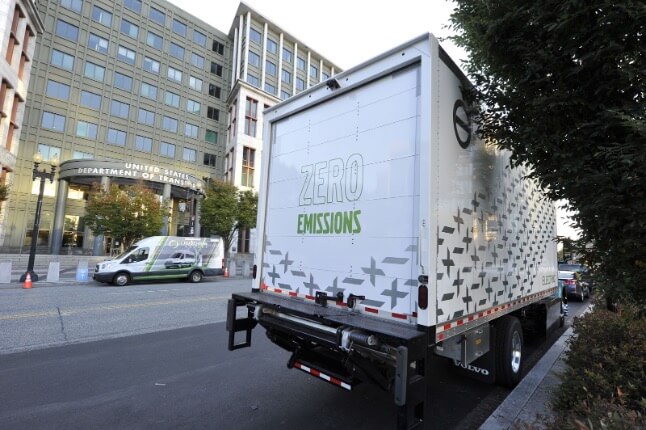
The actions that are driving this shift to zero-emission freight include smart government policies, growing business leadership, and expanding regional and international coalitions dedicated to a cleaner freight future.
For example, in June 2020, California adopted the Advanced Clean Trucks (ACT) Rule, the world’s first Zero Emission Vehicle manufacturers requirement for trucks. The final rule was significantly strengthened, due to the efforts of a diverse coalition including representatives from frontline communities, environmental groups, businesses, labor, and health organizations. This landmark policy requires truck-makers to sell an increasing percentage of zero-emission trucks starting in 2024 through 2035. It was a major achievement for California’s clean air and climate goals that will reduce pollution that disproportionately impacts overburdened communities, create new jobs, and spur the market for zero-emission trucks within, and beyond, California.
Capitalizing on that momentum, Drive Electric partners launched a global effort to advance clean truck policies globally. The results have been impressive.
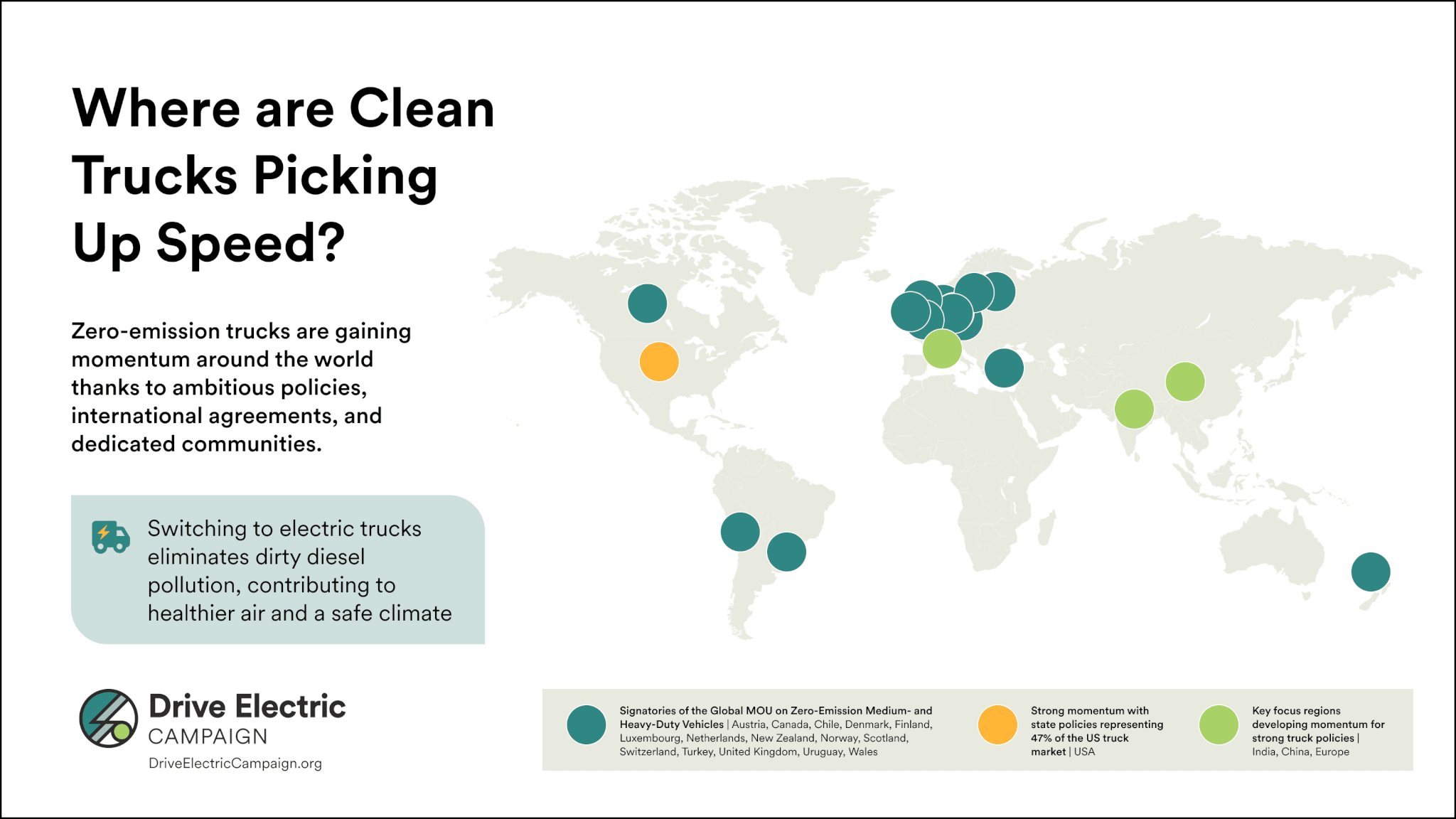
Just in 2021, five additional U.S. states have adopted the ACT: Oregon first, then Washington, New Jersey, New York, and Massachusetts. An additional 16 states are showing interest in advancing zero-emission truck policies, together representing 47% of the U.S. truck market. Many of these states are coordinating through a multi-state agreement, where governors came together to set goals to achieve 100% sales of zero-emission trucks and buses, and are working together on enabling policies and actions.
The momentum doesn’t stop at the U.S. border. At the United Nations Climate Change Conference in October 2021, Drive Electric partner Drive to Zero kicked off a global Memorandum of Understanding to raise ambition to reach 100% zero-emission medium- and heavy-duty sales between 2040 and 2050. By the end of 2021, the MOU has already helped more than a dozen countries and sub-national governments commit to a zero-emission future, accounting for 9% of the global commercial sales of freight trucks. The MOU also spans the globe from New Zealand to Uruguay and endorsements come from Scandinavian leaders like Norway, Denmark, Switzerland, Finland, and the Netherlands, to the UK, Wales, and Scotland, and EU members including Austria, Turkey, and Luxembourg. In Europe alone, these commitments represent 20% of the truck market.
Also in Europe, Drive Electric partners supported several “National Truck Platforms” in multiple key countries including Spain, Poland, France, Italy, Germany, and the UK. Each platform works locally to coordinate members like logistics companies who own trucks, retailers who need freight delivered, power providers who can benefit from and support electric trucks, advocates, and ministries who can support the transition with policies. The European Clean Trucking Alliance is a cross-national platform that connects 27 member businesses calling for rapid decarbonization of road freight. The Alliance drives support through position papers calling for increased ambition, and open letters to the EU on policies (such as the Eurovignette).
In China, the upcoming National Clean Diesel Action Plan includes zero-emission zones in Beijing and Hainan, building on the success from Shenzhen which has over 60,000 electric delivery trucks today, as well as pilot programs and specific policies to limit peak road transport emissions. In India, recent actions include standards, electric bus pilots, expanded financial incentives, and a newly launched campaign, Shoonya, supported by Drive Electric partner RMI India, to promote electric vehicles for urban deliveries.
These are just a few examples of how this work is advancing around the world. Shifting to zero-emission trucks will make a measurable difference in our everyday lives, from cleaner air in cities and near ports and distribution centers, to urban delivery that doesn’t pollute our neighborhoods.

The initiative aims to develop a collective roadmap for a reliable and interoperable greenhouse gas emissions accounting system; welcomes a senior advisor.
We can’t fix what we can’t measure robustly, and reliable measurement and accounting of greenhouse gas (GHG) emissions is critical to climate accountability. There is still a big gap between what is emitted and reported when it comes to some GHG emissions. Only last week, the International Energy Agency flagged that methane emissions from the energy sector are about 70% higher than reported in official data, reflecting huge strides in improved measurement, including better satellite monitoring. When it comes to companies specifically, a 2021 BCG survey found that companies estimate a 30% to 40% average error rate in their emissions measurements.
To address some of these issues, especially on corporate reporting of emissions, ClimateWorks Foundation and over 20 leading organizations recently announced a new initiative, the Carbon Call, that will focus on improving reliability and interoperability in carbon accounting for the planet. We’re excited to work with others to strengthen the foundations for carbon accountability and advance a reliable, global system of interoperable GHG ledgers.

We have brought on JC Seghers as a senior advisor where he will act as the global representative of the initiative, responsible for strategic direction and ensuring progress against the initiative’s objectives. In particular, JC brings experience working with governments and businesses on GHG emissions accounting and will further refine how the initiative will hold itself accountable.
Seghers notes, “while corporations, non-profits, scientific, and philanthropic communities have made progress on standard-setting, inventories, and public disclosure, there is work to do to tie it all together.”
To this end, we will be working closely with the participating organizations to develop a collective Carbon Call roadmap for increased reliability and interoperability in our GHG accounting systems by COP27.
With more complex financial and regulatory instruments, the demand for accurate GHG accounting is rapidly growing.
We will also be working with the founding signatories of the Carbon Call to clarify the criteria and timeline by which we will track our collective progress. We are heartened by the overwhelming interest in this initiative, and the Carbon Call will be announcing new signatories in early Spring.
Stay tuned for periodic updates. Contact us to learn more about becoming a Carbon Call signatory or participant.

The use of sustainable aviation fuels (SAF) to decarbonize aviation is a promising prospect but high production costs and low supply has limited its adoption to date. There are two potential energy sources for zero-emission planes (ZEP) – hydrogen and electricity. Due to the weight of current batteries, electric aircraft will be limited to short-range commuter missions in the near term. Hydrogen-powered aircraft, on the other hand, are promising but not without their own technological challenges.
The Promise of Hydrogen
As a fuel source, hydrogen provides three times the energy per unit mass than fossil jet fuel and produces zero carbon emissions on usage. It can be used to generate electricity through fuel cells or combusted to power gas turbine-based aircraft propulsion systems. Both energy pathways, fuel cell and combustion, are carbon-free. Additionally, by not producing any soot, hydrogen might be able to address the warming impact of contrail cirrus, the clouds produced by plane exhaust, which could be aviation’s greatest contributor to global warming.
On the fuel-cell side, smaller companies like ZeroAvia and Universal Hydrogen are working to retrofit existing 40- to 90-seat aircraft with hydrogen fuel-cell propulsion. These companies are focusing on using compressed hydrogen as a fuel and the retrofitted aircraft are expected to service routes of 750 km or less (like Los Angeles to San Francisco, for example).
Hydrogen combustion aircraft are being pursued by Airbus with their ZEROe initiative. A recent study by ClimateWorks partner, the International Council on Clean Transportation (ICCT), supported by the Heising-Simons Foundation, suggests that liquid hydrogen combustion designs could service a majority of short- and medium-haul routes, representing one-third of passenger aviation demand, starting in 2035. The study also suggests the fuel costs will be higher than fossil jet fuel but lower than e-kerosene, positioning hydrogen as a potential solution for the deep decarbonization of aviation.
Where challenges emerge
Several challenges need to be addressed before hydrogen can succeed as aviation fuel. In order for this technology to be successful, it is key to ensure hydrogen is produced through sustainable methods with low life-cycle carbon emissions. Without proper life-cycle accounting, hydrogen fuel will not provide the necessary carbon reductions and, under certain conditions (e.g. “blue” hydrogen produced with significant methane leakage and low carbon capture rates), could be worse than using fossil jet fuel. Usage of green hydrogen (that is, hydrogen produced using additional renewable energy) must be incentivized to achieve the deep decarbonization required from the aviation sector.
An engineering challenge is hydrogen’s low density. It is necessary to compress or liquefy hydrogen to carry enough to power a flight. To produce the same energy as a unit of jet fuel, it would require seven times that volume of compressed gaseous hydrogen and four times that volume of liquid hydrogen. Compression or liquefaction of hydrogen requires more energy and suitable storage tanks which are heavy and difficult to integrate with the aircraft structure. For the time being, this will limit the use of hydrogen to flights less than 3,400 km, the ICCT report finds.
Finally, bringing hydrogen-compatible planes to market will also require significant investment in the research and development of key hydrogen-related technologies such as liquid hydrogen storage tanks and hydrogen combustion turbines. Infrastructure investments in hydrogen production, delivery, and refueling would improve the economic case for these aircraft. This can be supported with research to determine where and how to invest in hydrogen infrastructure to maximize the CO2 mitigation potential while minimizing cost.
Areas of philanthropic support
Zero-emission planes are an important complement to sustainable aviation fuel (SAF) in decarbonizing aviation. They can address commuter, short- and medium-haul markets while the limited SAF supply can be focused on the long-haul market that requires higher density liquid fuels. There are a few ways the philanthropic community can support this progress:
- Seed research that looks into international standards to support the development of hydrogen-powered aircraft as well as hydrogen plane designs.
- Support advocacy to the International Civil Aviation Organization’s (ICAO) environmental committee to set and enforce sector-wide net zero targets.
- Promote cooperation between the government, industry, civil society, and other research organizations that will help bring these aircraft to the skies.
- Endorse policy levers that favor the development of this industry.
To learn more about the viability of hydrogen-powered aviation, explore the International Council on Clean Transportation’s study and follow along as ClimateWorks continues to expand its aviation portfolio.
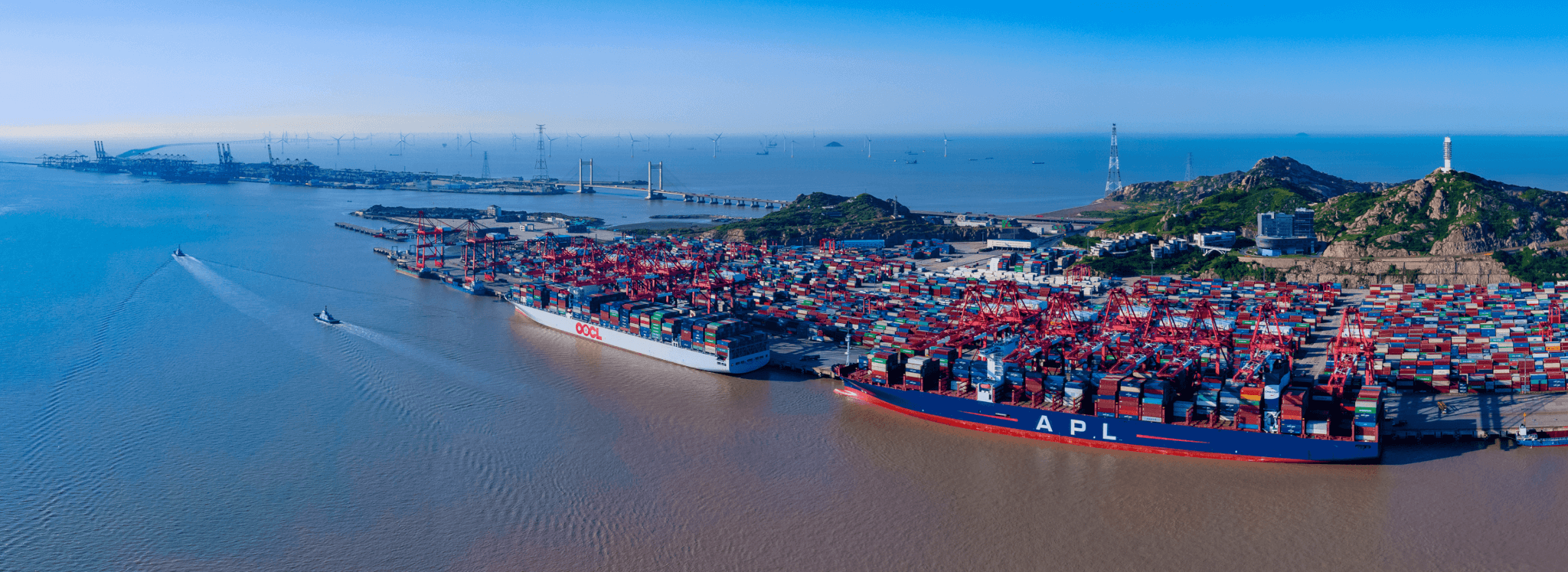
The Ports and Cities of Los Angeles and Shanghai announced a partnership to create a zero-carbon “green” shipping corridor along one of the busiest maritime trade routes in the world by 2030. An implementation plan to be created by the end of 2022 will outline how.
The maritime shipping sector is a complex global web of shipping lines, ports, retail companies, governments, mining companies, and many other stakeholders working together to transport goods and raw materials around the world. Despite the reputation that maritime greenhouse gas emissions are hard to abate, 2021 was a year of notable commitments and calls to action from various stakeholders to help jump-start the decarbonization of this industry:
- A large group of high-ambition private-sector actors, from shipping to ports to energy producers, called for policy action to decarbonize the maritime sector by 2050 and to make zero-emission vessels the default choice for shipping by 2030.
- Cargo Owners for Zero Emission Vessels (coZEV), a group of large global retailers that include Amazon and Ikea, committed to shipping their products solely on zero-emission vessels by 2040 and urged policymakers to ensure the full decarbonization of maritime shipping by 2050.
- At COP26, over 20 nations signed on to the Clydebank Declaration, pledging to act collectively to demonstrate by 2025 the viability of multiple green shipping corridors.
2022 is shaping up to build on this foundation. While the commitments made last year are a necessary first step, they are meaningless without implementation. That’s where green shipping corridors come in. This concept melds the necessary components of zero-emission shipping – from the technical aspects, such as fuel sourcing, bunkering infrastructure, and vessels, to the operational aspects, such as contracting models, pricing, and community input – into a systematic plan across multiple ports or geographies.
That’s what makes the Los Angeles-Shanghai agreement, facilitated by C40 Cities, so compelling. This transpacific corridor is one of the busiest trade routes in the world, so the proliferation of zero-carbon ships operating on this route has the potential to reduce a significant portion of the sector’s emissions. In addition, this groundbreaking agreement can motivate other routes, municipalities and consortia to do the same, hopefully inspiring a “race to the top” on green shipping corridors.
However, a “green shipping corridor” isn’t a label to use haphazardly on any effort to reduce greenhouse gas emissions along a maritime route.
We must note that the Los Angeles-Shanghai announcement calls for low-carbon and ultra-low-carbon fuels over the near term before the transition to zero-carbon fuels. While a phased approach seems intended to ease the transition, relying on fossil fuels during an interim period may jeopardize the sector’s ability to fully decarbonize by 2050. This is especially the case if the ports rely on liquefied natural gas (which in fact has very high greenhouse gas emissions on a lifecycle basis but has been passed off as low-carbon by the fossil fuel industry and is already in use on the corridor today). To make this a truly green shipping corridor, the partnership must ensure the timely implementation of fuels that produce zero greenhouse gas emissions on a lifecycle basis. This is most likely achieved through hydrogen-based fuels produced using renewable energy.
Furthermore, to stay on the path to full decarbonization by 2050, leading analysts estimate that zero-carbon fuels need to account for about 5% of all maritime fuels by 2030. Thus, for the whole sector to be on track, first movers such as the ports of Los Angeles and Shanghai must be capable of servicing a disproportionately higher share of its maritime vessels with zero-carbon fuels.
In a not-too-distant future, cargo ships will traverse the ocean without emitting greenhouse gases, but a future where this is the norm is not inevitable. The shipping industry, ports, policymakers and other stakeholders must act toward a climate safe shipping future. This will drive many other benefits, including the improved health and economic well-being of those communities that today shoulder the externalities of the shipping industry.
The Los Angeles-Shanghai partnership marks a significant initial step toward this future.








